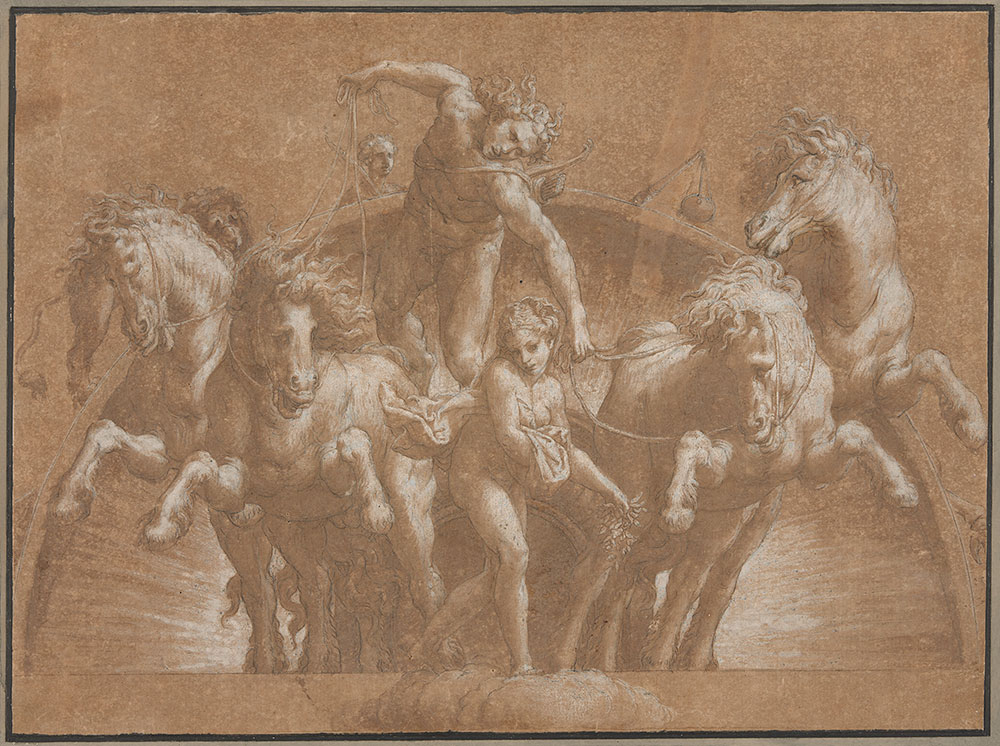
The heroic sun god Apollo drives his four- horse chariot while Aurora, goddess of the dawn, strews flowers in his path, announcing his—and the new day’s—arrival. Orsi’s drawing is a final preparatory sketch for an illusionistic fresco (now lost) that once adorned the clock tower in the northern Italian city of Reggio Emilia. Orsi was so successful in suggesting the god’s powerful forward motion that Apollo looks as if he might fly from his chariot and out of the picture frame. The design was meant to be seen from below, which explains the slightly distorted perspective.
Lelio Orsi
Italian, 1511–1587
Apollo driving the chariot of the sun, ca. 1544–45
Pen and black ink, with brush and brown wash, heightened with white opaque watercolor, with incising, on paper prepared with a light- brown wash
The Art Institute of Chicago, gift of Richard and Mary L. Gray; 2019.855
Gray Collection Trust, Art Institute of Chicago
Photography by Art Institute of Chicago Imaging Department
Ian Hicks: Many of the most important commissions by the historically obscure artist Lelio Orsi, were outdoor facade frescoes, which had been lost to time. But his highly individual style is still known from his powerful surviving drawings. Like many other Emilian artists, Orsi was profoundly influenced by Correggio, but he had eclectic tastes that included a deep interest in the muscular figures of Michelangelo. This impressive drawing is among the relatively rare fixed points in Orsi's corpus as it is connected to a commission he received in 1544 to fresco the clock tower in the town of Reggio Emilia. Appropriate to the location, the design depicts Apollo driving his chariot, which is carried aloft by four charging horses. In the foreground, Aurora, or Dawn, stands on a cloud announcing the first rays of the new rising sun. Fragmentary zodiacal symbols of the summer and autumn months appear in the background. The artist delineated the dramatically charged poses of Apollo and his horses with a virtuosic contrast of white heightening against a brown wash preparation. Likewise, Ludovico Carracci's nearby drawing employs this same technique and similarly excited figures to evoke the drama of divine revelation.
